Look no further for a comprehensive guide to some of the most popular ecotourism destinations for sustainable travelers around the world
Ecotourism destinations have become more popular than ever, as more and more travelers are adjusting their globetrotting plans to be more responsible and sustainable. Ecotourism is travel and tourism that is centered around grounding oneself in the earth’s natural environment, with little disruption to the earth itself. There is a large focus on sustainability and traveling with the health of the natural environment in mind. Respecting the locals and their environment preserves the integrity of the land for travelers for years to come, and also bolsters the local economy in turn. So, even if you’re just looking for new environments and natural locations for your next trip, the practice of ecotourism serves to provide an eco-friendly and exciting experience for all involved.
Thinking of traveling more sustainably as an ecotourist? We’ve got you covered with some of the best ecotourism destinations in the world.
Ecotourism Destinations in Central/South America
Costa Rica
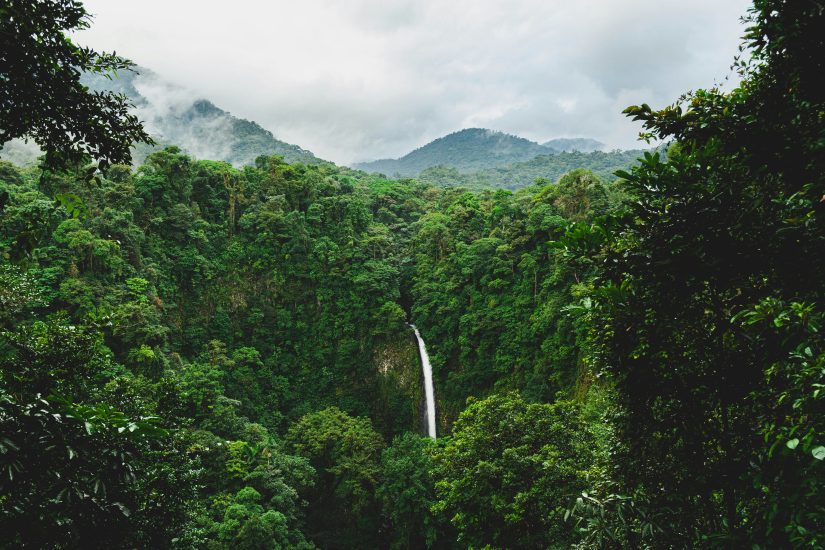
La Fortuna Waterfall, Costa Rica. Photo by Etienne Delorieux on Unsplash.
In Costa Rica, eco-friendly visitors can look forward to Costa Rica’s intensive conservation efforts that keep the country so lush. As one of the most biodiverse regions in the world, visitors will enjoy its volcanoes, forests, blue waters, beaches and more. Costa Rica is known to be the first country in the world to reverse deforestation and has more than 30% of its ocean under protection laws and policies. Visiting the beaches is a great idea for relaxation, but for a more unique experience, visit Ecotermales Fortuna hot springs. The geothermal waters in this natural fountain are said to soothe muscle and joint pain. There are heated and cooler pools at the fountain, making it so hot and cold therapy is easily accessible all in one spot. Ecotermales Fortuna can be reached by car or taxi and is a very short drive from La Fortuna. However, make sure to make a reservation so you don’t miss out.
Panama
Ecosystems in Panama include many diverse spaces from lush rainforests to sandy beaches. Tourists are attracted by the region’s snorkeling, kayaking, whitewater rafting, hiking and other adventurous activities for nature lovers. One of the western hemisphere’s largest rainforests resides in Panama for those looking to stray off the beaten path a bit. Canopy Tower, located in the center of Soberania National Park, provides a unique and non-invasive experience for visitors to eat in a restaurant sat atop the jungle canopy. Nearby, there are opportunities for visitors to meet with sloths in their native environments, carefully monitored by wildlife rangers and conservationists. Soberania is also a great spot for bird-watching if you’re looking for a more relaxing, less immersive experience. Getting to Soberania is accessible by bus, taxi or car from Panama City.
Ecuador
The Galapagos National Park Directorate and the Ecuadorian Ministry of Tourism provide legislation that incentivizes local businesses in the Galapagos Islands to be as environmentally friendly as possible. Travel between the islands is more sustainable in smaller groups that travel on smaller ships rather than larger cruises on yachts, so keep this in mind when booking travel plans. Try to book tours with local tour guides who really know the region to get the most authentic experience. One of the most popular places to visit on the Galapagos is Tortuga Bay, one of the top spots for snorkeling and deep sea diving, swimming and lounging on the beach. Tortuga Bay can be visited year-round due to its tropical temperatures, but make sure to plan for conditions on the beach as there are no changing areas or restrooms. Tortuga Bay can be reached by walking or water taxi from Puerto Ayora. The walk, if you choose to take it, is about 30-45 minutes through lush foliage and bustling wildlife ecosystems.
Ecotourism Destinations in the U.S./North America
Alaska
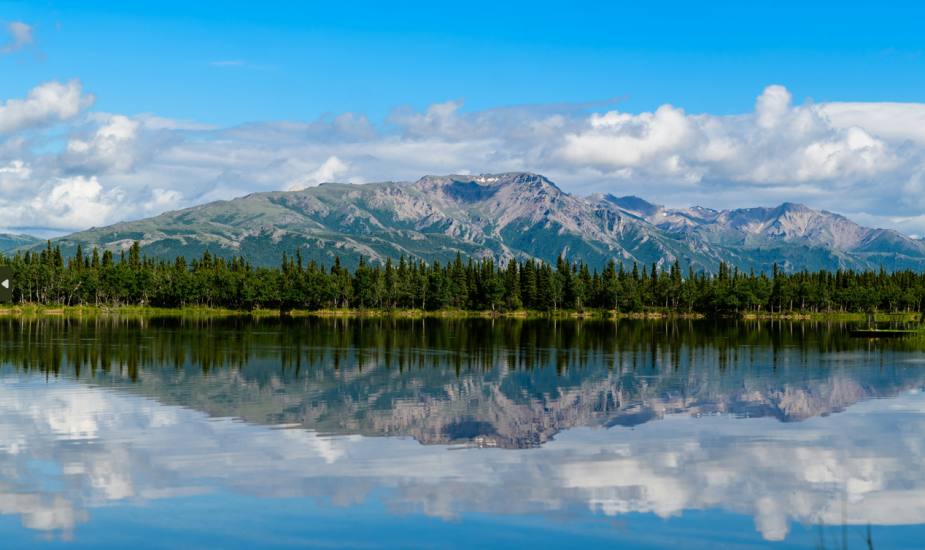
Denali National Park & Preserve. Photo by Hari Nandakumar on Unsplash.
Alaska offers nationally protected parks, glaciers, mountains, campsites, sights of the Aurora Borealis, river kayaking and more. If you’re staying in or near Anchorage, then Denali, Katmai, Kenai Fjords, Lake Clark and other national parks are situated nearby and are a few hours drive or quick flight away. Denali National Park & Preserve, one of the most famous national parks in Alaska and a staple for those living in or near Anchorage, is home to the tallest peak on the continent. Within the park, shuttle buses are available for transport, as there is a big focus on public transportation and cutting down on greenhouse gas emissions. Adventure Green Alaska certifies travel and tourism companies that focus on environmental sustainability, especially as a focus on ecotourism grows.
California
Yosemite National Park is situated in central California, surrounded by other bio-regions like Sierra National Forest and Stanislaus National Forest. It spans over 750 thousand acres and is managed by the National Park Service to maintain its glory. Make sure to recognize the indigenous presence across the four different counties that Yosemite spans by eating indigenous foods, buying indigenous goods and making sure to pay respect to the land itself. The national parks in the United States, including Yosemite, almost all offer views, guided tours, hiking trails, waterfalls and natural wonders. Yosemite is open year-round, but the peak season is between May and September. Make sure to download a map of Yosemite Valley before visiting to see different points of interest and where the two shuttle systems run for visitors.
Ecotourism Destinations in Asia/Oceania
New Zealand
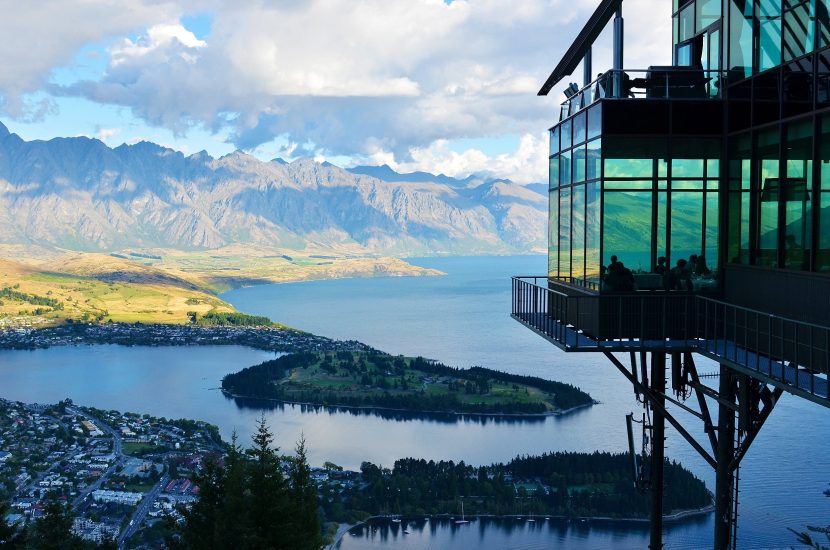
Majestic views in New Zealand. Photo courtesy of Pixabay.
In New Zealand, eco-tourists can look forward to experiencing the remnants of the island country’s volcanic and geothermal activity. Covered in rugged mountain ranges, rainforests and greenery, the New Zealand natives have cultural legends describing ecosystem conservation dating back to ancient times. The chief of the last established Maori tribe in the region created a curse called Tapu after returning to find his people slayed by a neighboring tribe. The land of the chief’s people, the Poor Knights Islands, are off-limits to visit themselves, but eco-tourists can take a boat ride past them to see the diversity of marine life in the region. Another short boat ride away is the White Island or Whakaari, home to one of the only active volcanoes left in New Zealand. Tourism boards across the region are working to coordinate with tour guide companies and businesses to create the most sustainable travel routes in the region.
Bhutan
Bhutan, while making many conservation efforts and working to preserve the locals’ agricultural and pastoral way of life, has been known to struggle with tourist intervention and interruption. Tourists are encouraged to respect the ways of local life in the region, and “the Homestay Programme” has been implemented as a way for tourists to connect with native Bhutanese people and stay in their homes rather than more traditional (and expensive) tourist hotel-style lodging. There are currently 21 homes within the largest Bhutanese national park, the Wangchuck Centennial National Park. Following the farm roads from the town of Chamkhar, the views on the way to and from the park include mountains, forests, waterfalls and more natural wonders that you won’t want to miss. Mountain biking, rock climbing, safaris and kayaking are prevalent within the park itself and provide a variety of adventures for any level of thrill-seeker.
Ecotourism Destinations in Africa
Kenya
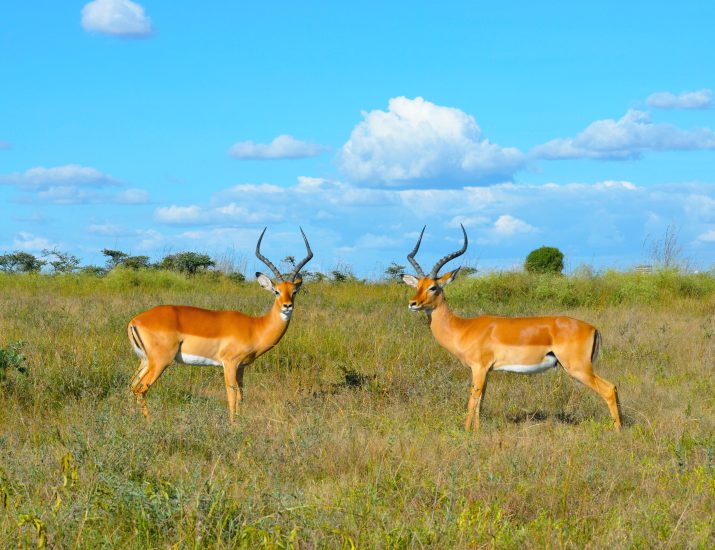
A wildlife safari in Kenya. Photo by Simon Brandintel on Pexels.
Kenya has an entire organization dedicated to ecotourism, appropriately named Ecotourism Kenya. The organization works to certify sustainable businesses, publish information and research and encourage tourism industries to adopt best practices in regard to the natural world. Kenyan safaris are hubs for ecotourism and conservation, specifically when it comes to zebra and wildebeest migration patterns. Tour groups treat the migrations in the Masai Mara National Reserve grasslands as animal sanctuaries where only viewing is allowed. Tours are given by trained professionals, leaving the wildlife to be just that: wild and undisturbed. Masai Mara’s natural beauty is a once in a lifetime opportunity, and can be reached by flying into one of the local airstrips on a connecting flight from Nairobi Wilson Airport.
South Africa
South Africa, while offering many ecotourism destinations along its coastlines and beaches, is also known for its bountiful national parks. South African national parks make it a priority to preserve the integrity of the natural environment and ecosystems in the region. Kruger National Park in northeastern South Africa, in particular, is another center for wildlife that you just can’t find anywhere else. The local culture has passed down many legends and folktales surrounding Kruger, making for a meaningful and immersive experience of South African culture within the park itself. Kruger offers wildlife safaris, large mammals and open wilderness spanning its 4.9 million acres. Make sure to visit during the dry winter months of May through September for the best safari experience, as the animals are more often out and about near various sources of water rather than hiding away. There are flights from Johannesburg, bus shuttles, car rentals and other ways to get there, so make sure to plan your itineraries to factor in travel time from South African metropolitan areas.
Ecotourism Destinations in Europe
Iceland
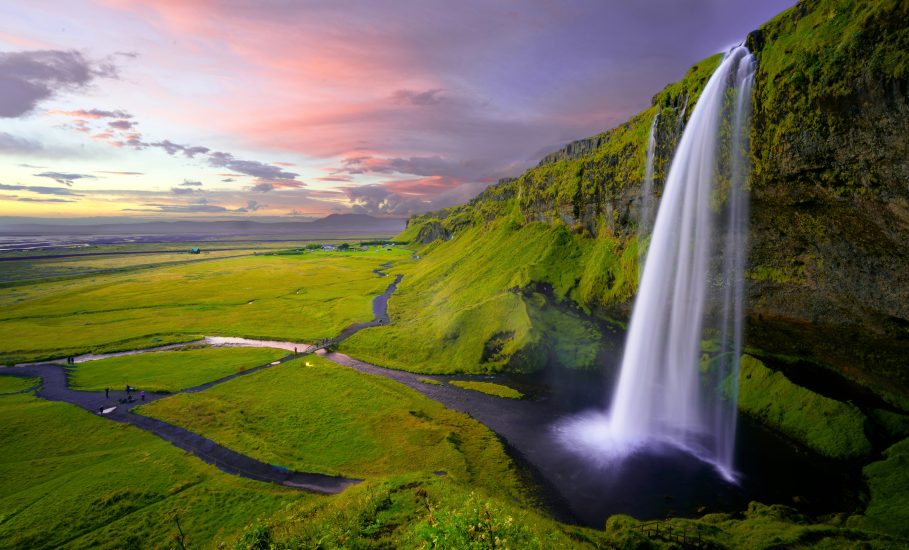
Seljalandsfoss Waterfall, Iceland. Photo by Robert Lukeman on Unsplash.
One of the top ecotourism destinations in the world, Iceland boasts a lot more natural beauty than just its name suggests. Aurora Borealis, glaciers, fjords, lava fields, geothermal spas, waterfalls and more call Iceland home. Eco-friendly tourism is on the rise here as Iceland is a beacon of hope for sustainability. Using interconnected public transportation systems, utilizing lodging with “Eco-Certified” badges, exploring local cuisine and culture and avoiding restricted areas are all ways to remain responsible as an eco-tourist in Iceland. The remote Westfjords are something that most tourists might not think to visit at first glance, but if you’re looking to truly experience the natural wonders that Iceland has to offer, visiting its oldest region is essential. Make sure to visit in the summer months, as this is when the Westfjords are most accessible by car. The rich wildlife here as well as the waterfalls and black sand beaches make for a great remote outing, away from the hustle and bustle of main cities like Reykjavik. As the global temperatures rise, Iceland’s wildlife is being threatened. Visit places that house puffins, arctic foxes, seals and humpback whales carefully, as they can be quite curious and friendly to visitors in this region.
Norway
Norway, famed for its breathtaking fjords, glaciers, mountains, Aurora Borealis and other natural wonders, is a great place to include on your European ecotourism vacation. The Norwegian government has implemented many different environmental policies and regulations in order to keep their natural beauty intact, so feel free to explore Norway’s natural environment and stray from the beaten path of the main cities, as long as you make sure to leave everything exactly as you found it. The Hardangerfjord, one of Norway’s iconic fjords and the second biggest in the country, is south of the city of Bergen and offers a variety of different tours, boat rides and hikes to see the various mountains, glaciers and waterfalls that the fjord encapsulates. Bergen is one of the world’s top fishing regions, and many conservation efforts here have been applauded by global environmental authorities and policymakers. Explore local culture at nearby museums and hiking destinations like Rundemanen and Mount Fløyen.
For more group travel planning advice and inspiration, Subscribe to Leisure Group Travel.
By Taylor Anderson–Chicago, Ill.






